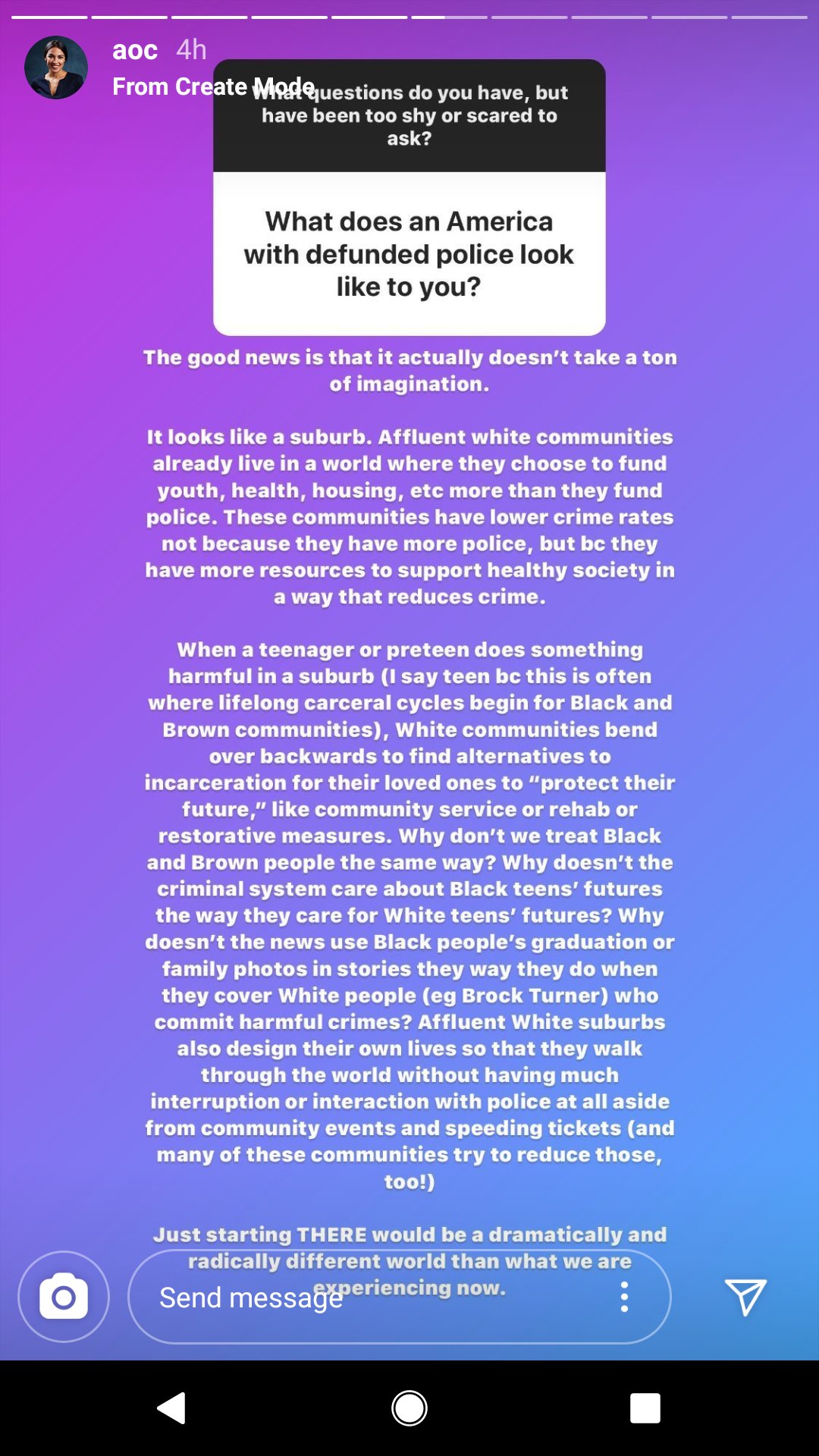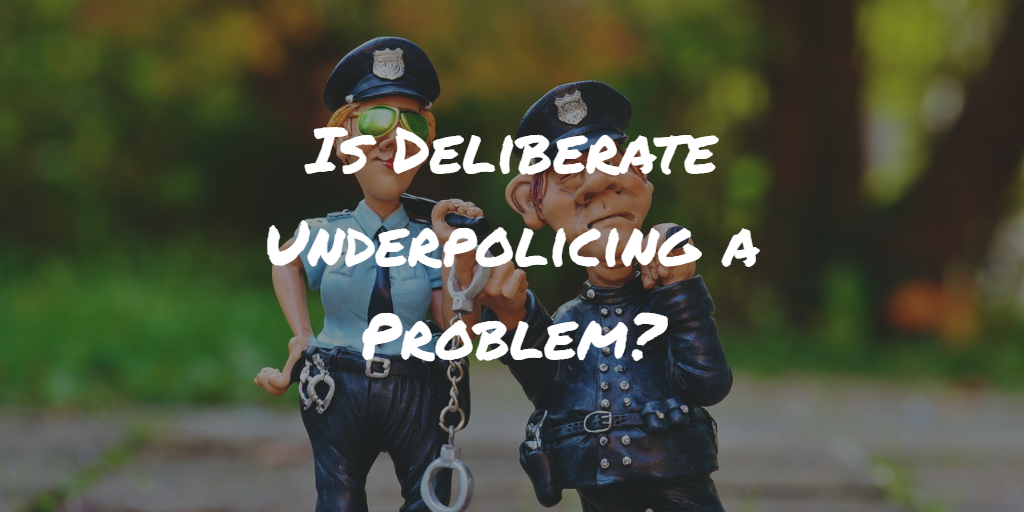Propublica thinks so: What Can Mayors Do When the Police Stop Doing Their Jobs?
Rises and falls in crime rates are notoriously hard to explain definitively. Scholars still don’t agree on the causes of a decades long nationwide decline in crime. Still, some academics who have studied the phenomenon in recent years see evidence that rising rates of violence in cities that have experienced high-profile incidents of police brutality are driven by police pullbacks. Many criminologists also cite the general deterioration of trust between the community and police, which leaves residents less likely to report crimes, call in tips or testify in court. Added to that are the dynamics that are now likely also driving a rise in violent crime, even in cities that have not witnessed recent high-profile deaths at police hands: the economic and social stresses of the pandemic lockdowns, including disruptions to illegal drug markets, and the usual seasonal rise in violence during summer.
I tend to discount the so-called “Ferguson Effect,” because the overall crime rates are already so noisy, and Michael Brown was killed while there was already a rising crime rate.





ProPublica acknowledge this evidence, but then cites anecdotes from Baltimore to raise the problem anew:
But the post-consent-decree pullback did not result in a rise in violent crime in the city, whose homicide rate remained very low compared with other large cities. In this, the city is representative of a broader trend, according to two recent de-policing studies. Richard Rosenfeld, a criminologist at the University of Missouri at St. Louis, and Joel Wallman, the director of research for the Harry Frank Guggenheim Foundation, examined the impact of arrest rates in 53 large cities on homicide rates from 2010 to 2015. They found that arrests, especially for less serious crimes such as loitering, public intoxication, drug possession and vagrancy, had already been dropping over that period, even prior to the rise of the Black Lives Matter movement in 2014. And they found that in nearly all of those cities, the declining arrest rates did not result in higher rates of violence. To put it another way: Over the first half of the past decade, many cities shifted away from the “broken windows” style of policing popularized in New York under former Mayor Rudy Giuliani, but even as they did so, violent crime continued to decline in most places, as it has since the early 1990s.
Here are the anecdotes about Baltimore:
In Baltimore in 2015, the underpolicing was so conspicuous that even some community activists who had long pushed for more restrained policing were left desperate as violence rose in their neighborhoods. “We saw a pullback in this community for over a month where it was up to the community to police the community. And quite frankly, we were outgunned,” the West Baltimore community organizer Ray Kelly told me in 2018. In fact, the violence got so out of hand — a 62% increase in homicides over the year before — that even some street-level drug dealers were pleading for greater police presence: One police commander, Melvin Russell, told New York magazine in 2015 that he’d been approached by a drug dealer in the same area where Gray had been arrested, who asked him to send a message back to the police commissioner. “We know they still mad at us,” the dealer said. “We pissed at them. But we need our police.”
I think there’s good reason to be skeptical (beyond the self-serving motivated reasoning inherent in a police commander’s report of a drug dealer’s plea): aggregate crime levels are a noisy phenomenon, and they’re unusually responsive to the agencies that are charged both with monitoring them and lowering them. We know precincts in NYC would “juke the stats” and we also know that a lot of crime is inexplicably random, or tied to the efforts of third parties. So if there are two cities where police pullback was associated with subsequnce increases in violent crime, and hundreds of cities where it wasn’t, it looks irresponsible of ProPublica to write this article, even if it’s ultimately a sympathetic one.
There’s some historical justification for this view, as well:
The Week Without Police: What We Can Learn from the 1971 NYC Police Strike
Over the course of the five day strike, there was no apparent increase in crime throughout the city. In fact, the only real differences noted by reporters were an increase in illegally parked cars and people running red lights, the actions of opportunistic motorists. Richard Reeves, writing for the New York Times, said “New Yorkers— ‘a special breed of cats’…went about their heads‐down business. There was no crime wave, no massive traffic jams, no rioting.” Some attributed all of this to Police Commissioner Patrick V. Murphy’s “visible presence” strategy of deploying superior officers and detectives in patrol cars in heavily populated areas, like Times Square. Others simply attributed it to the cold. However, the strike brought to light another very real possibility: maybe the city was able to function as normal with a much smaller number of police officers.
In New York, major crime complaints fell when cops took a break from ‘proactive policing’
Each week during the slowdown saw civilians report an estimated 43 fewer felony assaults, 40 fewer burglaries and 40 fewer acts of grand larceny. And this slight suppression of major crime rates actually continued for seven to 14 weeks after those drops in proactive policing — which led the researchers to estimate that overall, the slowdown resulted in about 2,100 fewer major-crimes complaints.
Here’s the underlying 2017 study. (Here’s where I predicted these results in 2014.)
At the same time, the version of policing reform that’s most commonly endorsed by leftist politicians like Alexandria Ocasio-Cortez is one where the simultaneous over- and under-policing of African-American communities is understood to be part of the same phenomenon, and corrected together such that Black Americans finally receive the same treatment as middle-class whites.

If the ideal of policing abolitionists is that we should all have responsive, service-oriented police, then a very good way to get there would be community control boards. My colleague Olúfẹ́mi Táíwò has argued that this could just as easily be abolitionist as reformist:
By taking public control over the police who handle the bulk of arrests, we act before other parts of the system can get involved. Without community control, abolition just means asking a larger set of white supremacist institutions to restructure a smaller set. Instead, we are asking our neighbors.

Leave a Reply